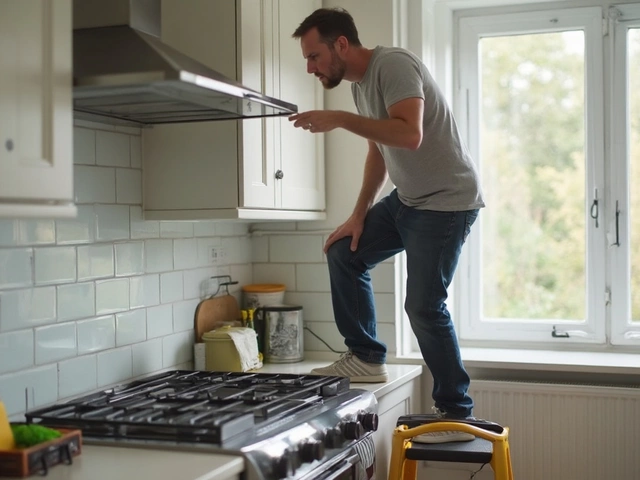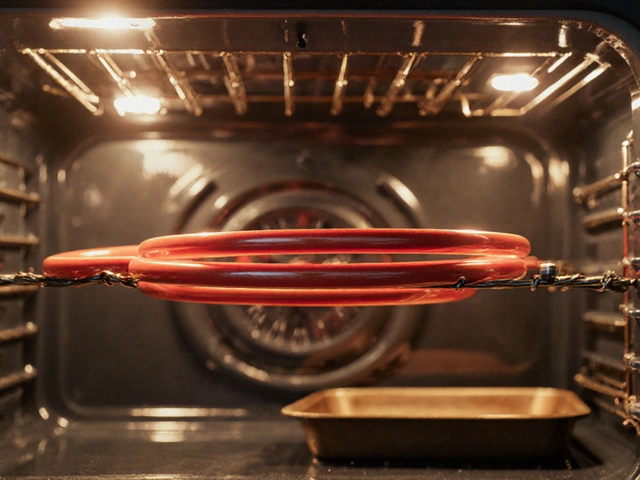Got a sneaking suspicion your extractor fan isn’t up to snuff? Maybe it’s making a strange noise, or you’re noticing that musty air doesn't seem to clear out like it used to. Before you hit the panic button, let's explore some straightforward ways to check if your fan is doing its job.
First off, keep an eye (and an ear) out for signs that scream trouble. If steam lingers in the bathroom long after a hot shower, or cooking smells hang around well into the night, your fan might need a checkup. Another red flag is a strange buzzing or grinding noise – yep, just like a grumpy old vacuum cleaner when it's had enough.
Now, let’s get hands-on with some basic tests. Hold a sheet of paper or a tissue up to the grille while the fan runs. Does it stick? If not, your fan might not be pulling its weight. And let's not forget to check the switch and power source. Sometimes, the solution is as simple as a tripped circuit or a hidden switch turned off.
If these don't solve the mystery, be prepared to get a bit more technical. But don’t worry, we’ll guide you through fixing your fan like a pro, and we’ll also know when it's wiser to bring in the experts.
- Signs Your Extractor Fan May Not Be Working
- Simple Tests to Check Your Fan
- Common Problems and Fixes
- When to Call a Professional
Signs Your Extractor Fan May Not Be Working
Ever walked into your kitchen or bathroom and thought, “Why is it so stuffy in here?” Well, your extractor fan might be playing hooky. Catching the early signs of a fan not doing its duty isn’t too hard, especially if you know what to look for.
Lingering Odors and Moisture
If you notice cooking smells, bathroom odors, or steam sticking around much longer than usual, it's a pretty big hint. Your extractor fan should whisk these away like a magic trick. But when it doesn’t, something’s up.
Unusual Noises
Our fans shouldn’t be shouting to be heard. Grinding, squeaking, or buzzing noises are a sure sign the gears inside could be wearing out, or maybe there’s a loose part rattling around.
Dust Buildup
Take a peek at the fan cover. Is it layered in dust or dirt? A good fan can pull in airborne particles, and over time this means grime. Too much buildup often means bad airflow and poor performance.
Weak Airflow
- Test by holding a piece of tissue near the grille as the fan operates.
- If the tissue doesn’t at least flutter, your fan’s not pulling like it should.
Visual Checks Inside
Turn off the power and remove the grille to inspect the blades. Spinning blades should be reasonably clean. If they’re gunky, things can get stuck and slow the fan down.
| Common Fan Issues | Impact |
|---|---|
| Clogged Grille | Restricted Airflow |
| Worn Motor | Noisy Operation |
| Loose Parts | Rattling Sounds |
So, if any of this sounds familiar, it’s kind of like your fan waving a white flag. These signs might mean it's time to roll up your sleeves for a little DIY fix or call in some professional help.

Simple Tests to Check Your Fan
Alright, let's roll up our sleeves and dive into some easy-peasy checks to see if your extractor fan is doing its thing. These tests won't require you to dismantle your entire kitchen or bathroom—just a little bit of patience and observation.
Use the Paper Test
Simple as it gets. Grab a sheet of paper or tissue and hold it up to the fan grille when it's turned on. Now, watch closely. If your fan's working like it should, the paper will stick right to it, proving it's pulling in the air effectively. If it falls flat, we've got a problem.
Check for Airflow
Place your hand near the vent while the fan is running. Is there a noticeable flow of air? If you can barely feel anything, it might be a sign that the fan isn’t functioning. Sometimes a blockage in the vent might be the culprit, and cleaning it out could do the trick.
Sound Check
Your fan shouldn’t sound like a jet engine ready for takeoff. If you hear excessive buzzing or grinding noises, that’s a hint something's amiss. It could be loose parts or debris caught inside, and giving it a good cleaning might solve the issue. A fan running smoothly should have a consistent hum.
Observe the Power Connections
This might seem obvious, but check the power switch and circuit breaker. Ensure that power is reaching the fan. Sometimes, it’s just a case of a tripped breaker or a loose wire. A quick peek could save you a lot of headaches.
Inspect the Fan Blades
Do an inspection of the extractor fan blades. Dust and grime can accumulate and slow down the fan. A gentle clean with a damp cloth can sometimes boost performance remarkably. Remember to turn off power first for safety!
Doing these quick checks can help you determine whether the issue is something you can fix on your own or if it's time to call in the pros. Armed with this knowledge, you can keep your air fresh and save on unnecessary repairs.

When to Call a Professional
Even the most proactive DIYer reaches a point where calling in a pro just makes sense. Sure, there’s a lot you can do by yourself, but knowing when to throw in the towel is key. So, when should you pick up the phone?
Electrical Issues
First off, if there’s even a hint of electrical trouble, it’s best to leave it to the experts. Messing around with wiring, especially if you’ve got no experience, can be downright dangerous. If your extractor fan is tripping circuits or you notice sparks, it’s time to call in a professional.
Persistent Problems
What about that weird noise that just won’t quit or a fan that’s stubbornly underperforming despite your best efforts? Sometimes, the problem is beyond what a simple DIY fix can handle. A pro will have the right tools and experience to diagnose and solve complex issues efficiently.
Installation and Replacement
Let’s say you’ve decided your old fan’s beyond repair, and you’re ready to spring for a new one. Installing or replacing an extractor fan isn’t a walk in the park. It often involves cutting into walls and connecting to ducts, a job best left to people who know what they’re doing.
Warranty Concerns
If your fan’s still under warranty, don’t risk voiding it by attempting repairs yourself. Check the warranty’s fine print—many require you to have a professional handle repairs to keep the coverage intact.
A quick call or consultation can save you time and potentially bigger headaches down the line. Plus, you’re getting peace of mind knowing the job’s done right. So, be smart about when to go solo and when to dial up some professional help. It could make all the difference in the lifespan and efficiency of your extractor fan.







